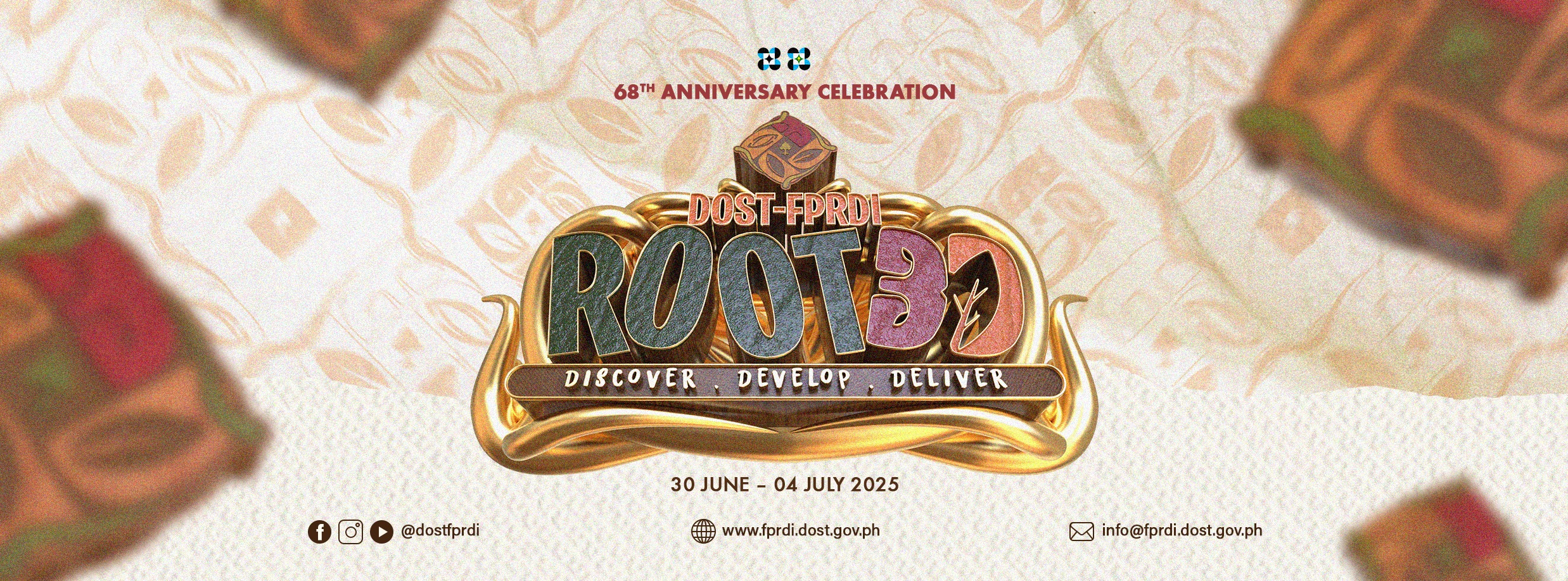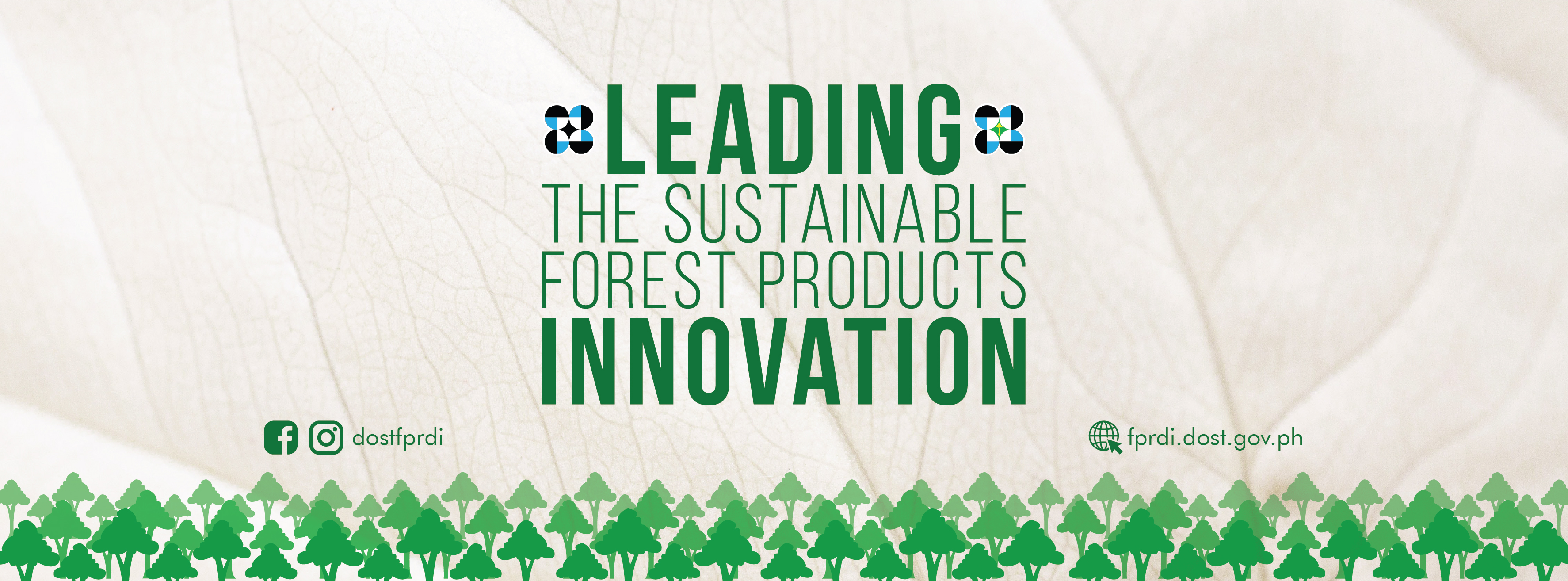
Basic R&D and Services
The efficient utilization of tree plantation species (TPS) has become increasingly more important particularly if these are to be used as substitute to other widely and traditionally used wood species. Wood, aside from being conventionally used as construction and housing material when processed into lumber, has many industrial uses. These are for furniture, pulp and paper, veneer and plywood, composite boards (particleboard, fiberboard, etc.), utility poles (power and telecommunication poles), packaging (pallets, fruit boxes, crates etc), builders’ woodworks (doors, windows, door and window jambs, mouldings, balusters, stairs and railings, shingles and shakes, parquets, etc), fancy woodwork, wooden shoes, pencil slat, cream spoon, chopstick, matchsticks, toothpick and many more. These uses however depend on the properties/characteristics (sawmilling, drying, machining, chemical, physical, mechanical, and finishing), natural durability and treatability of wood.
According to a report, the future of the wood-based industries will depend largely on how successful the efforts in developing industrial tree plantations. There is guarded optimism that the investment climate in the forestry sector will improve and translate into more forest plantation development. The furniture industry will continue to be an exporter of high quality products using a mixture of various raw materials such as wood, bamboo and rattan. Forests and forestry in the Philippines in 2020 will see an improvement in the forest cover. This will come mostly in the form of forest plantations. It is projected that an additional 220,000 ha of forest plantations will be established, mostly industrial forest plantations. It is projected that by 2020 the Philippines will be producing about 2 million m3 of logs mostly coming from forest plantations. The Philippines will also become a net exporter of lumber, veneer and plywood. It is expected that the country will be exporting 300,000 m3 of lumber, 10,000 m3 of veneer and 50,000 m3 of plywood. Furniture and handicrafts will continue to be foreign exchange earners. (Asia-Pacific Forestry Sector Outlook Study II. Working Paper No. APFSOS II/WP/2009/10, FMB-DENR 2009)
Sawmilling properties of wood refers to sawing method, percent lumber recovery and processing rate on primary conversion of wood while machining is related to wood processing operations such as planing, turning, boring, shaping and mortising. The smoothness and ease with which wood can be worked depends on the wood species. Wood drying/wood seasoning reduces the moisture content of wood before its use. When the drying is done in a kiln, the product is known as kiln-dried timber or lumber, whereas air drying is the more traditional method. Mechanical properties are related to the strength qualities or characteristics of wood, i.e. static bending (modulus of rupture/elasticity), compression (parallel/perpendicular to grain), hardness (side grain, end grain), shear parallel to grain and toughness while physical pproperties refer to density, moisture content and shrinkage (longitudinal, tangential and radial) of wood. Chemical pproperties of wood vary from species to species. The chemical properties being investigated are ash, starch, wood extractives, lignin, cellulose and others. Finishing properties refer to the process of refining or protecting a wooden surface, especially in the production of furniture. It is the final step of the manufacturing process that gives wood surfaces desirable characteristics, including enhanced appearance and increased resistance to moisture and other environmental agents. Finishing can also make wood easier to clean and influence other wood properties.
Natural durability refers to the natural resistance of heartwood to decay, insect or marine borer attack. Regardless of the wood species, sapwood generally has poor resistance to biological attack so the natural durability rating is based only on the heartwood. Tree plantation species like any other wood, are also vurnerable to attack of wood-decaying fungi and wood-destroying insects. Their natural resistance to biological attack varies from one another and the severity of the attack depends on factors such as climate and the condition of wood. Hence, determining the natural durability of tree plantation species is important so that chemical treatment application can be made to protect wood early on from bio-deterioration.
The program comprises of R&D projects which generally aims to establish potential utilization of some TPS through properties and quality evaluation. The various project components cover the following: basic properties (physical and mechanical, chemical and anatomical) of some TPS; establishment of preservative treatment schedule; characterization of the active components of TPS to be used for preservatives and efficacy of chemical components/derivatives.









